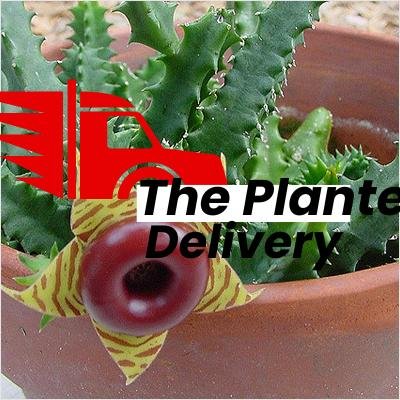Description
Description for Huernia Zebrina
Lifesaver plants can produce amazing 5-pointed, star-like blooms with zebra stripes and a thickened center that resembles a root beer flavored Lifesaver. If this isn’t enough to intrigue you, they have fascinating 4-sided stems with soft teeth along the edges. In lower light situations, these are deeply green, but they attain a reddish tinge in full sun.
Planting and care
Lifesaver plants can be grown as intriguing indoor, greenhouse or summer patio container plants almost anywhere. Species such as Huernia zebrina, H. pillansii, H. keniensis and H. primulina can be grown in outdoor landscapes in warm-winter and Mediterranean climates.
Protect outdoor plants from frost and rain during winter and full sun in summer. Plant enthusiasts worldwide grow Huernias because of their interesting stem shapes and colors and because of the often intricate and fascinating flower forms and colors.
Caring for Huernia Zebrina
- Huernias require a potting mix with excellent drainage.
- A succulent plant mix of 50 percent pumice or perlite, 25 percent peat or organic mulch, and 25 percent sand helps prevent rotting and overwatering.
- Roots experience die back in cool-season dormancy, so plants grow best in shallow containers that allow the soil to dry out quickly
- Lifesaver plants prefer bright light or partial shade.
- In nature, they grow underneath shrubs or other plants.
- Too much sun causes stems to develop protective reddish or purple pigmentation and can actually scald the stems.
- Too little light leads to weak, thin growth with decreased flower production.
Typical uses of Huernia Zebrina
Special features: Easy to grow. As a houseplant, grow in pots, hanging baskets or along shelves. Ground cover or bedding plant where it can be grown outdoors.
Delivery: With in one day
Any questions, feel free contact us:







Reviews
There are no reviews yet.